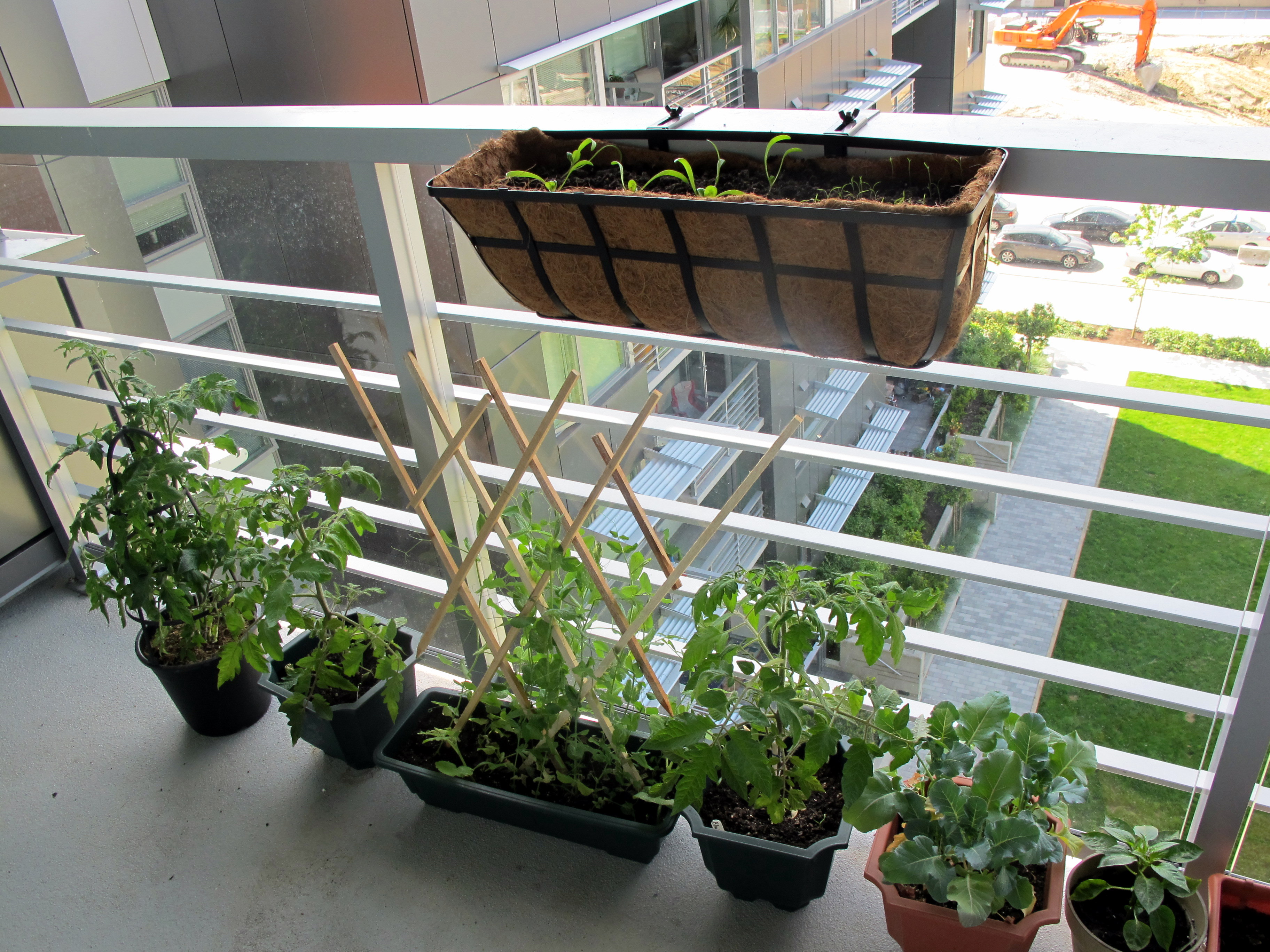 If you don’t have a garden or some place to grow your own fruits and vegetables, but you have a balcony, you can start having your small “kitchen garden” in containers. Apartment and condo dwellers needn’t miss out on the pleasure of growing their own flowers, fruits and vegetables. Just about anything that can be grown in a traditional garden can thrive as part of a balcony garden. You can save some money, but mostly you can eat what you grew and also a good way to relax and charge your batteries.
If you don’t have a garden or some place to grow your own fruits and vegetables, but you have a balcony, you can start having your small “kitchen garden” in containers. Apartment and condo dwellers needn’t miss out on the pleasure of growing their own flowers, fruits and vegetables. Just about anything that can be grown in a traditional garden can thrive as part of a balcony garden. You can save some money, but mostly you can eat what you grew and also a good way to relax and charge your batteries.
Make a plan
Learn about growing conditions like temperature, hours of sunlight, and growing your zone. Once you understand the growing environment on your balcony it’s easier to design your garden and select the right plants. If you don’t get things exactly right the first year you garden, one of the advantages of balcony gardens is that they are easy to change from year to year, making experimentation a breeze.
What to grow
Your balcony’s conditions will determine the best vegetation for your garden, but fruits and vegetables, like lettuce, strawberries, herbs and tomatoes, are great for container gardening because they don’t require very much space. Plants that require the structural support of trellises or cages to grow properly (cucumbers, beans and other vine plants) can make use of the fixtures and beams of a balcony.
In Hungary (in a dry continental climate zone) you can focus on:
· tomato
· paprika (chilli or sweet paprika)
· radish
· spinach
· sorrel
· all sorts of lettuces
· strawberries
· gooseberry
· currant
· runner bean
· and all kind of herbs.
What not to grow
Don’t grow plants that are not suited to your growing conditions. When starting out don’t assume that any of your plants will winter-over on a balcony. Stick with annuals. Do your research and be honest about how much time and effort you’re willing to put into it. Your growing conditions, commitment to watering/fertilizing, and your budget are the three biggest factors that help you decide what not to grow.
Design
The same design principles apply on a balcony as they do in a garden. Try vertical gardening. Hanging baskets and trellises can be used to maximize space. If your building allows it, shelves, hooks, brackets and wall-mounted urns are great balcony space savers. Consider incorporating a seating and/or entertaining area, don’t overcrowd the space.
Caring for balcony gardens
Container gardening requires a lot of watering, so remember that a good soaking is much better than an occasional light sprinkling. Gardens in the sky are often subject to pollination problems due to the lack of insect traffic at higher elevations. In some cases hand-pollination may be necessary, so give plants a good shake every day; it should liberate enough pollen to be effective.
Saving tips
For the containers use recycled materials, we can make some handmade wooden boxes or re-use some plastic boxes or tins from the household. If you put some smaller stones on the lower level of the containers, under the soil level you can reduce or stop the soil erosion. For watering, you can collect and use some rainwater filtered through some light net or tissue. Even the rainwater from the urban area is usable for gardening before it touches the ground of the street level.
The benefits of balcony gardening
Balcony gardens are quick and easy to maintain. There’s also the benefit of being able to set it up quickly in the spring, and tear it down just as quickly in the fall. They’re also easy to change around. Each year you can arrange your containers differently and often choose a completely different collection of plants.
Gardening has so far being considered a leisure activity. Today, having a vegetable garden can actually be a quite rewarding activity for its owners and it is much more than just a hobby since besides giving you the organic vegetables you can also reduce your carbon print!